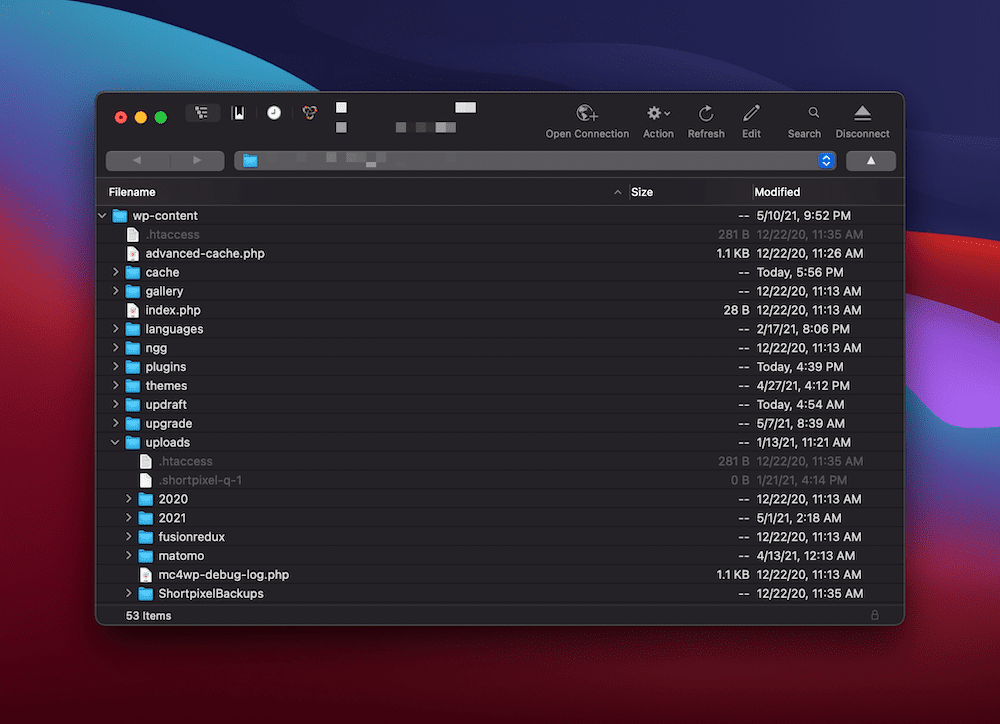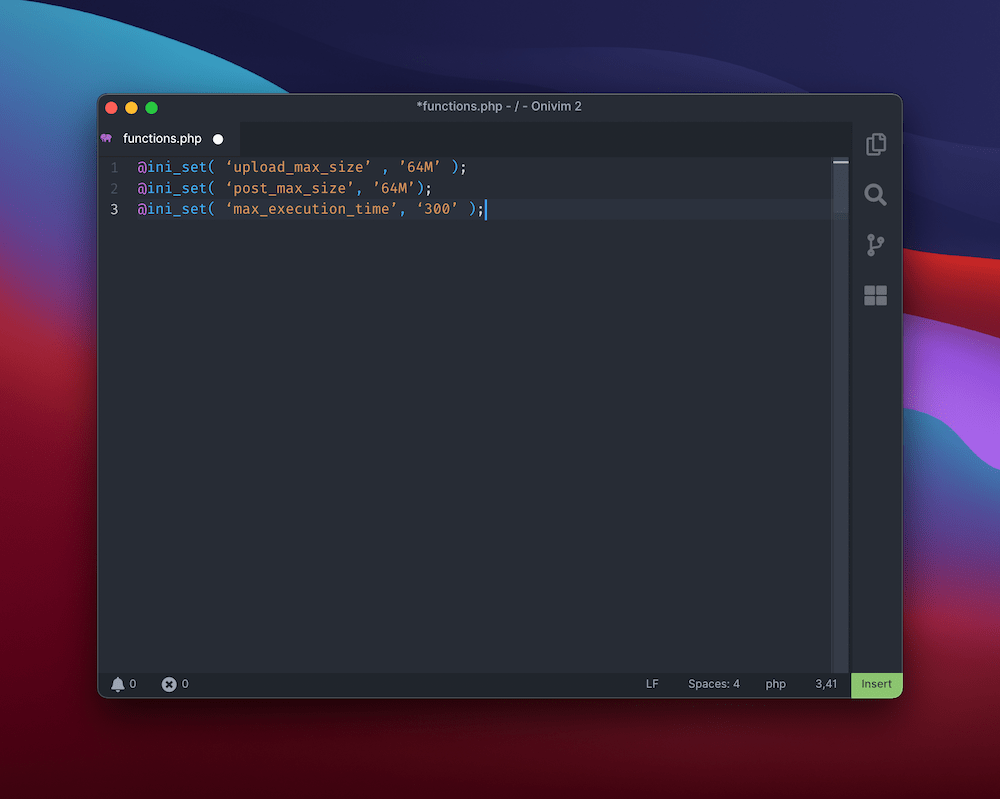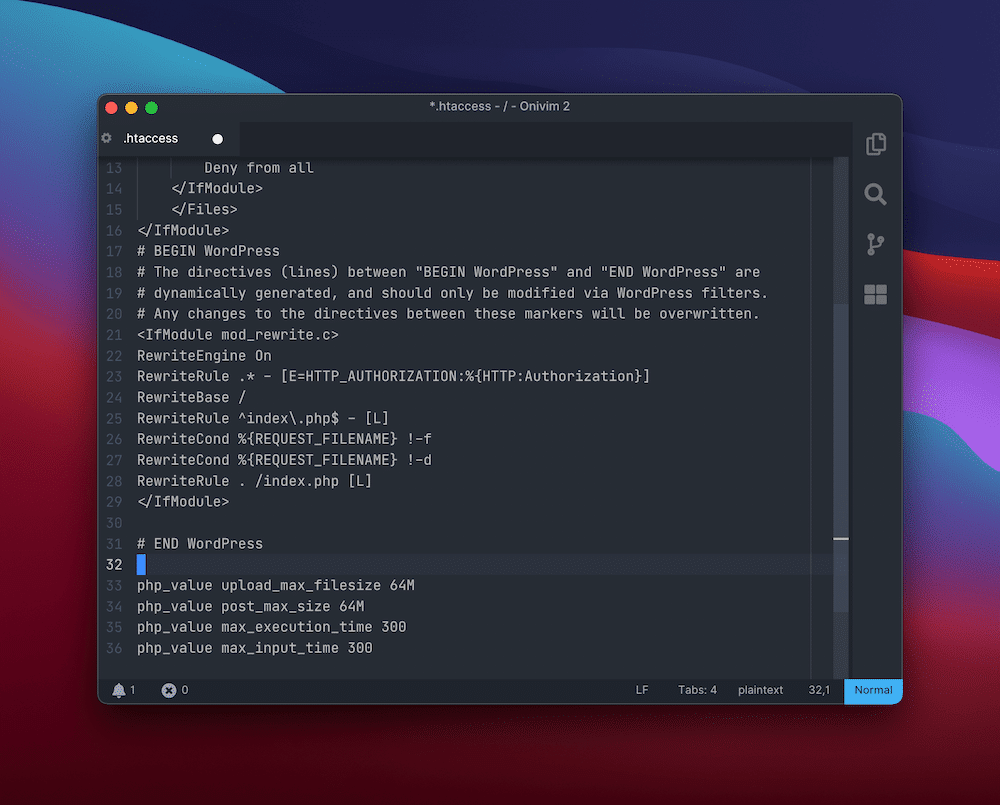Nextcloud Upload Server Replied: Request Entity Too Large
WordPress errors come in all shapes and sizes. In most cases they're easy to decipher; such is the accessibility of WordPress' error reporting. All the same, when the "413 Request Entity Too Large" fault pops up, information technology can leave you scratching your caput.
Without realizing it, yous already have everything you need to sympathize and diagnose the error inside its proper name. The good news is you won't need more than a standard Secure File Transfer Protocol (SFTP) customer and administrator access to your server.
In this post, we'll take a look at how to solve the "413 Request Entity Also Big" fault. We'll likewise requite you a quick list of steps to take before y'all begin to solve the fault, to make the procedure super straightforward.
Check out our video guide to fixing the "413 Request Entity As well Large" Mistake
What the "413 Asking Entity Too Big" Error Is (And Why It Exists)
We noted that there's a clue in the fault name as to what the solution and problem are. Earlier y'all go sleuthing yourself, though, nosotros'll spoil the surprise: information technology's in the adjective "big."
In a nutshell, the "413 Request Entity Besides Large" error is a size upshot. It happens when a client makes a request that's besides large for the cease server to process. Depending on the nature of the error, the server could close the connection altogether to prevent farther requests being made.
Allow's intermission the error downwards into its parts:
- "413": This is i of the 4xx mistake codes, which hateful in that location's a trouble between the server and browser.
- "Request Entity": The "entity" in this case is the information payload being requested by the customer from the server.
- "Too Large": This is straightforward: the entity is bigger than the server is willing or able to serve.
In fact, this error has changed its name from what it originally was to be more specific and offer more clarity. Information technology'due south now known equally the "413 Payload Too Big" error, although in practice, y'all'll see the older name a lot more.
As for why the mistake occurs, the simple explanation is that the server is ready up to deny explicit uploads that are too large. Think of times when you upload a file where there's a maximum file size limit:

In most cases, there will be some validation in identify to stop the error… if you're seeing the "413 Request Entity Likewise Big" error, those validation efforts may non be as watertight as you call up.
What You'll Need to Resolve the "413 Asking Entity Too Large" Error
Fixing this error is all most raising the maximum file size for the server in question. Once that'due south out of the style, you shouldn't encounter the mistake anymore.
Every bit such, to set up the "413 Request Entity Too Large" error, y'all'll need the following:
- Administrator access to your server.
- A suitable SFTP client (nosotros've covered many of these in the past).
- The know-how to use SFTP — there's a good guide to the basics on WordPress.org, and you lot won't need more than that.
- A text editor, though at that place's no need for anything as well complex.
- A clean and current fill-in in instance the worst happens.
Equally an aside, we mention SFTP throughout this article as opposed to FTP. In short, the former is more secure than the latter (hence the proper name). That said, while there are other differences you lot should investigate, the functionality remains the aforementioned for the vast majority of uses.
Besides, it's worth noting that the MyKinsta dashboard has plenty of functionality on hand to aid y'all get onto your server. For case, each site displays SFTP connection information that's easy to understand:

This can help you become into your site without fuss. In some cases, you may be able to import the credentials straight to your called SFTP customer.
3 "Pre-Steps" Y'all Can Have Earlier Rectifying the "413 Request Entity As well Large" Mistake
Before you lot cleft open your toolbox, there are some steps you can take to help resolve the "413 Request Entity Besides Large" fault. Hither are two — and each one may requite you a welcome workaround to the error.
1. Try to Upload a Large File to Your Server Through SFTP
Because the issue is related to the file sizes hitting your server, it's a good thought to circumvent the frontend interface and upload a big file to the server yourself. The best style to do this is through SFTP.
This is because protocols such every bit SFTP are almost as "close to the bone" as you lot tin can get with regards to the way you access your server. Also, you can simultaneously dominion out any issues with the frontend that may be causing the error.
To practice this, log into your site through SFTP and find the wp-content folder. In hither will be the uploads folder.

Next, upload your file to this folder on the server and meet what the effect is. If the upload is successful, we suggest sending an e-mail to the site's developer, as they may desire to investigate the consequence further on the frontend.
Subscribe At present
2. Bank check for Server Permissions Errors
Of course, permissions errors will stop any server request from running. As such, you should cheque whether the user has sufficient permissions to upload files of any size. Once this is sorted, the error should disappear.
The beginning step is to determine whether this is an issue with a single user (in which instance they may exist restricted for a reason). If the "413 Request Entity Too Large" error is happening for multiple users, you tin be more sure of something that needs your input.
We'd advise two "pre-fixes" here:
- Double-cheque your WordPress file permissions, just in case there'due south an issue.
- Remove and re-create your SFTP user (a full general investigation is a neat idea).
While they may not solve the error in the offset case, yous'll at least know that your file and user construction is as it should exist.
How to Solve the "413 Asking Entity Also Large Fault" for Your WordPress Website (3 Ways)
Once you lot've gone through the pre-steps, you lot're ready to tackle the error caput-on.
The post-obit three methods are listed from easiest to toughest, with the understanding that that the path of least resistance is the best 1 to accept.
1. Edit Your WordPress functions.php File
First off, yous can work with your functions.php file to assistance bump upwardly the file upload size for your site. To do this, start log into your site through SFTP using the credentials found within your hosting control panel.
When you're in, you'll want to look for the file itself. The functions.php file should be in the root of your server. In many cases, this root is called www or public_html, or it could exist the abbreviated name of your site.
One time you've found it, y'all can open up it in your text editor of choice. If yous don't see the file, you can create it using your text editor.
Once yous take a file open up, enter the following:
@ini_set( '_max_size' , '64M' ); @ini_set( 'post_max_size', '64M'); @ini_set( 'max_execution_time', '300' ); In short, this increases the maximum file size of posts and uploads while boosting the time the server volition spend trying to process the asking. The numbers here could be anything you wish, but they should exist large enough to make the error disappear. In practice, 64 MB is plenty for all but the virtually heavy-duty of tasks.

When you lot're ready, save your file and upload it to the server again. Then, cheque whether the "413 Request Entity Too Large" error all the same exists. If it does, caput onto the next method.
2. Modify Your WordPress .htaccess File
Much like your functions.php file, your .htaccess file sits on your server. The divergence here is that .htaccess is a configuration file for Apache servers. If y'all're a Kinsta customer, you lot'll know we run Nginx servers, then y'all won't run across this file in your setup.
All the same, for those with an Apache server, this is the arroyo you'll need. Much similar with the guidance for functions.php, starting time log into your server through SFTP, and then look in your root folder equally earlier.
The .htaccess file should be within this directory, simply if it'south missing, we suggest you arrive touch with your host to determine where it is, and whether your server runs on Nginx instead.
In one case y'all've plant it, open up information technology up again. You'll run across some tags, and the almost important here is # END WordPress. You'll want to paste the following afterward this line:
php_value upload_max_filesize 64M php_value post_max_size 64M php_value max_execution_time 300 php_value max_input_time 300 In short, this does most the same thing equally the lawmaking you'd add to the functions.php file, but information technology's alike to giving the server directly instructions.

When yous've finished, save your changes, upload the file, and check your site again. If y'all're notwithstanding having problem, nosotros'd again suggest contacting your host, equally they will need to verify some aspects of your setup that lie beyond the scope of this article.
3. Change Your Nginx Server Configuration
Our terminal method is specific to Nginx servers — those used at Kinsta. The purpose is the same as when working with the .htaccess file, in that you're talking to the server, rather than going through WordPress.
We mentioned that for Apache servers you'll use .htaccess. For Nginx servers, though, you'll want to find the nginx.conf file. Rather than walk yous through every step in the chain, nosotros've gone over the full details in our mail service on changing the WordPress maximum upload size.
Recollect that you'll need to as well alter the php.ini file based on the changes you make to nginx.conf. We've covered that in the aforementioned blog post too, so take a look there for the exact steps.
Summary
Despite WordPress being a stone-solid platform, you'll see a lot of different WordPress errors over time. The "413 Asking Entity Also Large" error is related to your server, though — not WordPress. As such, in that location's a different approach to solving this error than other platform-specific issues.
If yous accept SFTP skills, there'southward no reason you can't fix this fault apace. Information technology relates to the upload size specified in your server configuration files, so earthworks into your .htaccess or nginx.config files will be necessary. It'due south a breeze to scissure open up your text editor and make the changes to these files, and if you're a Kinsta client, we're on hand to support you through the process.
Save time, costs and maximize site functioning with:
- Instant aid from WordPress hosting experts, 24/7.
- Cloudflare Enterprise integration.
- Global audience achieve with 29 data centers worldwide.
- Optimization with our built-in Application Performance Monitoring.
All of that and much more than, in one plan with no long-term contracts, assisted migrations, and a 30-solar day-money-back-guarantee. Bank check out our plans or talk to sales to find the programme that'southward right for yous.
Source: https://kinsta.com/knowledgebase/413-request-entity-too-large-error/
0 Response to "Nextcloud Upload Server Replied: Request Entity Too Large"
Post a Comment